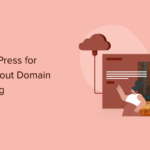[ad_1]
In a Google Search Off the Record podcast, Google’s Lizzi Sassman and John Mueller discussed writing alt text and share the thought process behind exceptional alt text.
The subsequent conversation revealed that there are issues to consider like balancing the needs of SEO with using the alt text correctly for the purpose of accessibility.
Google’s Lizzi Sassman starts the discussion by considering what the best approach to writing alt text is, wondering if the right way is to be descriptive or if there’s another way.
Lizzi Sassman:
“What if you’ve got alt text, but you’re not sure if it’s good?
It could be improved in terms of being descriptive, or it’s describing the image, but not necessarily in the best way?
Because once you start to sit down and actually write the alt text, you discover that you could say a lot of things about, like, ‘Oh, it’s a Search result’ or you’re describing like something that’s happening.
Maybe it’s a diagram of how Search works, like something that’s describing a concept.
Or it’s a picture of an event or something like that.
Do you approach it from describing what’s in there?
Or are there other strategies that we could apply for improving the words that we’re using for a given image?”
Accessibility and Alt Text
John Mueller touches on the topic of accessibility and alt text.
The purpose of alternative text in images is to provide audiences with screen readers a way to understand the images.
Something to help to understand how alt text and accessibility intersect is offered by the official standards body for HTML, the Worldwide Web Consortium (W3C) in the form of a little trick for writing alt text for accessibility purposes.
“Imagine that you’re reading the web page aloud over the phone to someone who needs to understand the page.
This should help you decide what (if any) information or function the images have.
If they appear to have no informative value and aren’t links or buttons, it’s probably safe to treat them as decorative.”
John Mueller commented:
“So I think you have to watch out for accessibility… I don’t know… Like everything around accessibility.
So that might be something to check out with someone who is a little bit more informed on accessibility-side.
Like how alt text should be chosen.”
Alt Text and Image Context
John next discusses alt text from the perspective of SEO.
He continued:
“From an SEO point of view, my recommendation is always to provide context for the image as well in the alt text.
So if you have a picture of a beach, don’t just be like, ‘Oh, this is a photo of a beach.’
But rather like, ‘This is the beach before the chemical spill happened.’ And…
Because it’s very different context if someone is searching for a beach for a holiday, it’s like, ‘Oh, I want to see a beautiful beach. I’ll go there on vacation.’
And if you notice, well actually, this is before the chemical spill happened, then it’s like, ‘Well, maybe like that would lend itself to different kinds of Search queries.’ “
John then zeroes in on identifying what users want from images that are shown in Google’s Image Search.
He explained:
“Because ultimately, when you’re talking about Image Search, it’s not that people want an image, but rather they want information which is attached to that image.
They want kind of to understand a specific topic to find some information.
And that additional context is something that you can provide in the alt text.
And that’s something that they might be searching for.
And if they’re searching for it, then make it easy for them to find that.”
Lizzi Sassman answered:
“That’s true.
And putting context around the image, too, because you don’t necessarily need to put all of it in the alt text.
It could be the paragraph that’s introducing the beach.
And it may have more information about where it happened, like what beach are we at, and what year was it, and all this stuff.
And using that real estate around the image, because you don’t necessarily want like a huge paragraph as the alt text either.
…Right?
And so how do you know which text should go where?
But providing context, I think, is always good to introduce the thing for screen readers as well, because it’s reading like top down.
So if there’s some text before it to prep you, like, ‘All right, like this is…’ I don’t know… ‘background about what was happening before the oil spill.’
And now, it’s the beach pre-oil spill, more information, and then the beach post… no, during the oil spill.
And then the clean-up activity… I don’t know… That kind of thing.”
John Mueller:
“Something along those lines.
So if you’re looking at the search documentation, and you have a sample of a screenshot with a recipe result, then you could provide some additional context, I guess, in the alt text, where you say like, ‘This is a recipe result with these five fields.’ “
Lizzi Sassman:
“Yes. And, I mean that’s… Even the way that you’ve phrased the sentence there.
Like, ‘This is a recipe rich result.’ That probably isn’t the best alt text because it’s like a full sentence.
It starts with words that are not related to the thing.
And perhaps people, like also using screen reader would just skip through it.
So one of the best practices is not to start every image with a screenshot of, a screenshot of, because then, it just becomes repetitive.
Like, we already are aware that it’s an image. You don’t need to say, ‘It’s an image of’ and then the thing.
Just launch in with whatever the description is. And it also doesn’t necessarily need to be a full sentence, I think.
It could be like just a descriptive phrase. It doesn’t need to be a full thought, I think.”
Descriptive Phrase With Context
An interesting takeaway from this podcast discussion is thinking about the context of the image in order to write a descriptive phrase for the alt text.
The other takeaway that’s notable is to avoid writing an alt text with words indicating that it’s an image or a screenshot but to rather focus on the context of that image within the overall meaning of the webpage. So if the webpage is about the ecological damage from an oil spill and the image is of a beach before an oill spill then that’s the context.
Citation
Featured image by Shutterstock/Cast Of Thousands
Listen to the Search Off the Record Podcast from the 11:53 minute mark
window.addEventListener( ‘load’, function() {
setTimeout(function(){ striggerEvent( ‘load2’ ); }, 2000);
});
window.addEventListener( ‘load2’, function() {
if( sopp != ‘yes’ && addtl_consent != ‘1~’ && !ss_u ){
!function(f,b,e,v,n,t,s)
{if(f.fbq)return;n=f.fbq=function(){n.callMethod?
n.callMethod.apply(n,arguments):n.queue.push(arguments)};
if(!f._fbq)f._fbq=n;n.push=n;n.loaded=!0;n.version=’2.0′;
n.queue=[];t=b.createElement(e);t.async=!0;
t.src=v;s=b.getElementsByTagName(e)[0];
s.parentNode.insertBefore(t,s)}(window,document,’script’,
‘https://connect.facebook.net/en_US/fbevents.js’);
if( typeof sopp !== “undefined” && sopp === ‘yes’ ){
fbq(‘dataProcessingOptions’, [‘LDU’], 1, 1000);
}else{
fbq(‘dataProcessingOptions’, []);
}
fbq(‘init’, ‘1321385257908563’);
fbq(‘track’, ‘PageView’);
fbq(‘trackSingle’, ‘1321385257908563’, ‘ViewContent’, {
content_name: ‘google-how-to-write-good-alt-text’,
content_category: ‘news seo’
});
}
});
[ad_2]
Source


